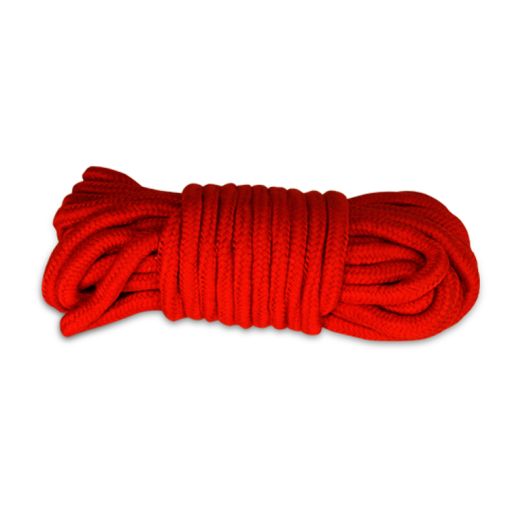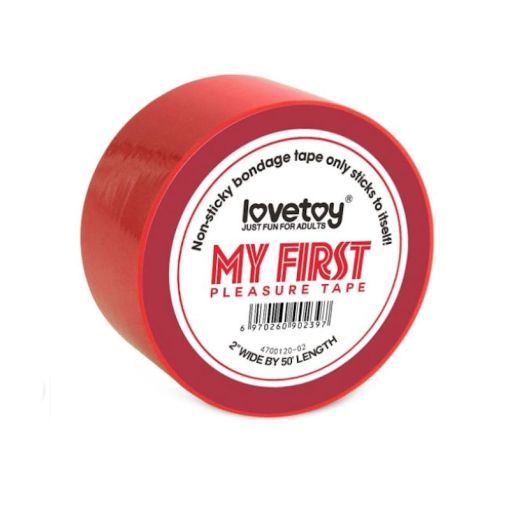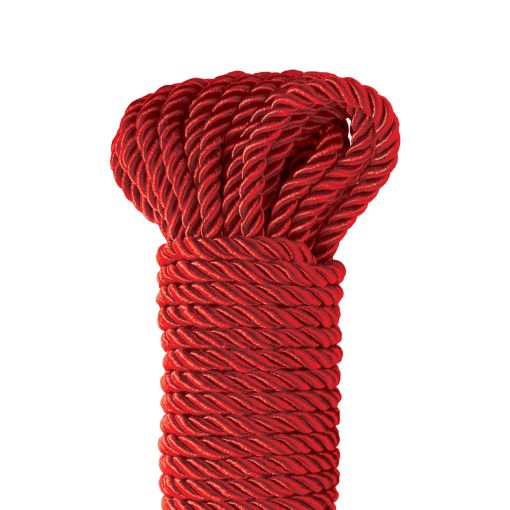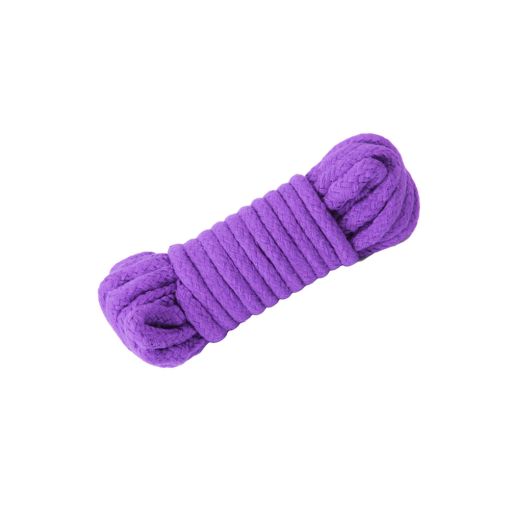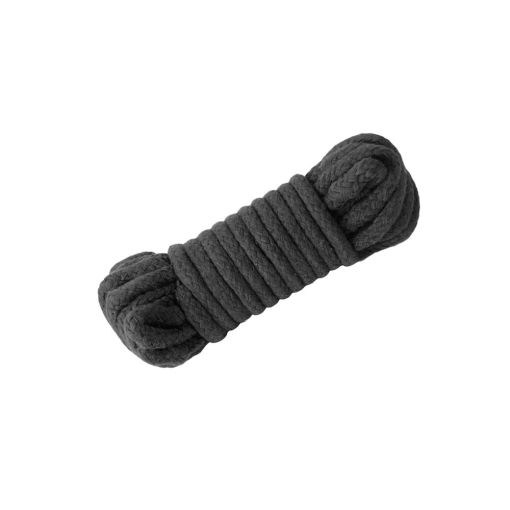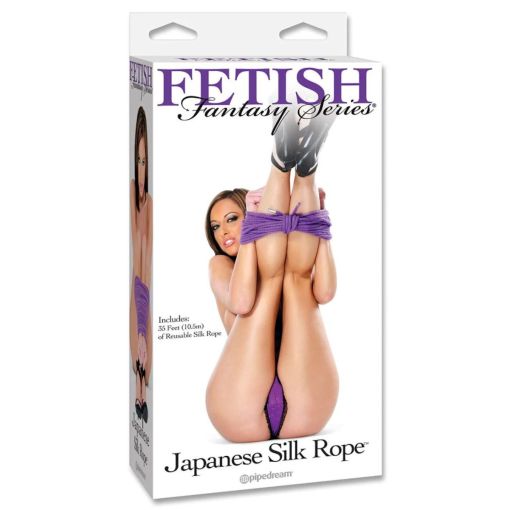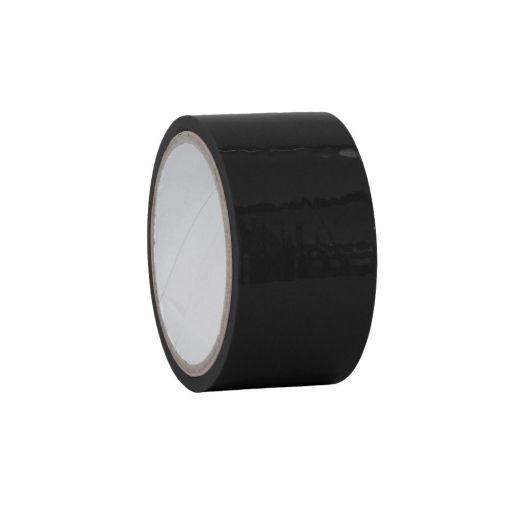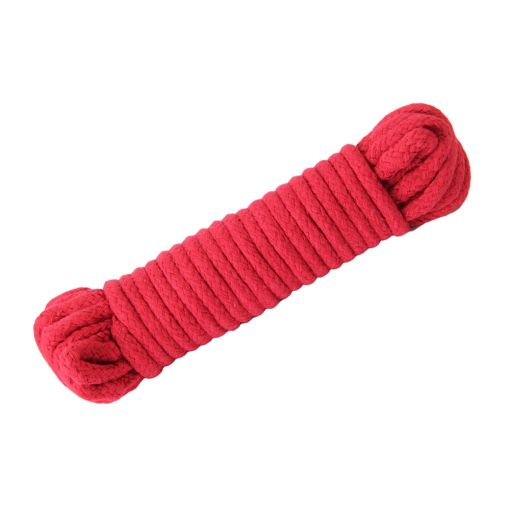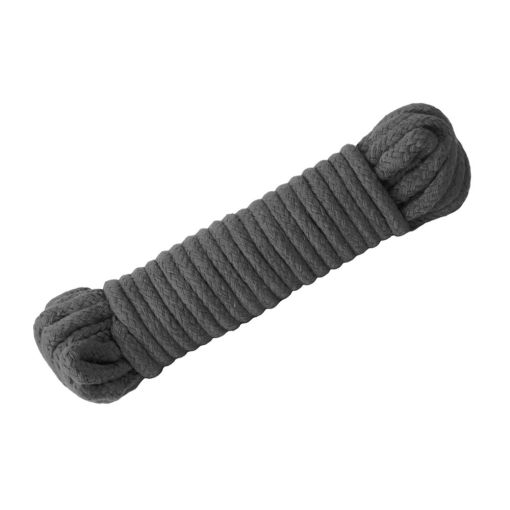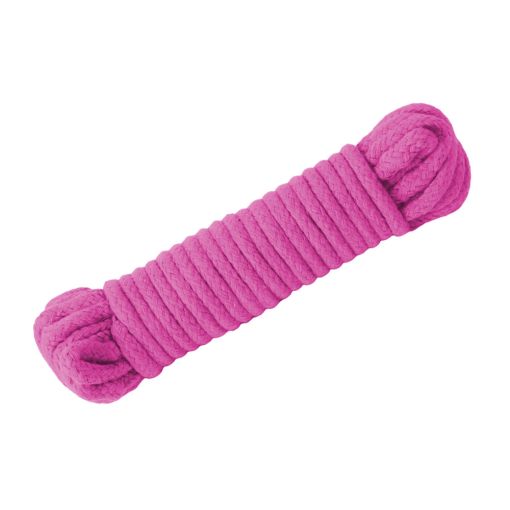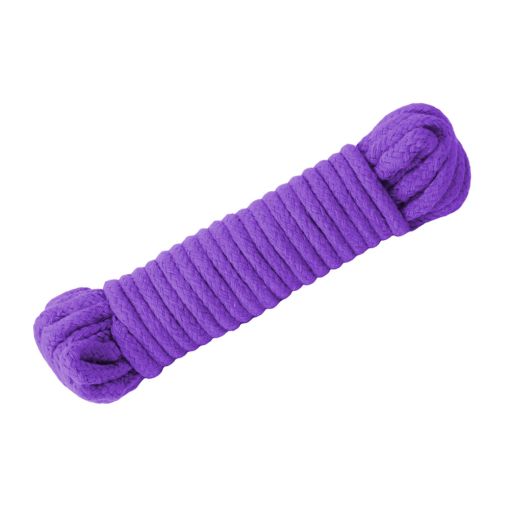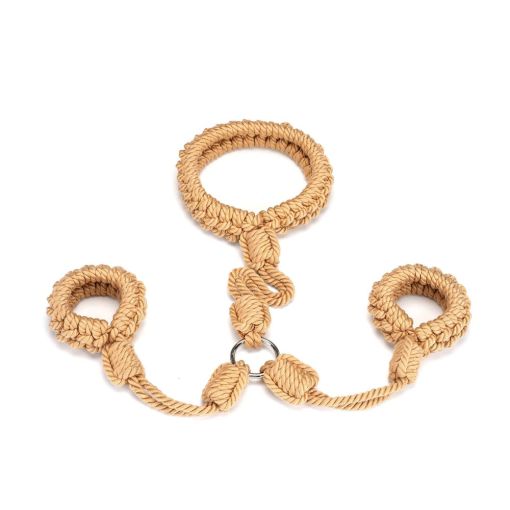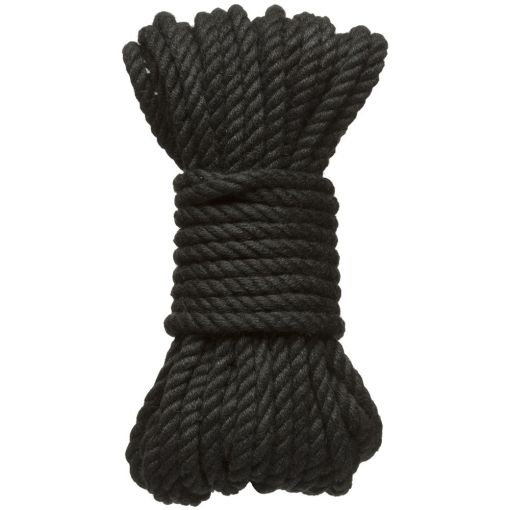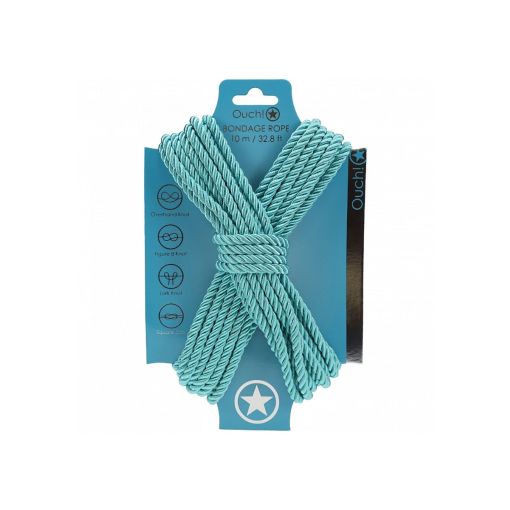Bondage Ropes
-
Lovetoy Fetish Bondage Rope$19.00In stock
-
25m Long Pink Bondage Tape$19.00In stock
-
My First Bondage Tape - RED$15.00In stock
-
Fetish Fantasy Deluxe Silk Rope RedSpecial Price $19.00 Regular Price $29.00In stock
-
In stock
-
In stock
-
In stock
-
In stock
-
In stock
-
In stock
-
In stock
-
In stock
-
In stock
-
Bound You Shibari Bondage Rope Wrist-To-Collar RestraintSpecial Price $59.00 Regular Price $75.00In stock
-
Doc Johnson - Merci - Hemp RopeAs low as $45.00In stock
-
Ouch! Bondage Rope 10m$29.00In stock
Introduction to BDSM Rope/Shibari Ropes
Japanese rope bondage is known as shibari (also called kinbaku). It is different from Western rope bondage in a few ways: instead of using softer cotton, silk, or polyester rope, it uses non-stretchy natural fibre rope, such as jute or hemp; it emphasizes friction and wraps instead of knots; it starts with the rope doubled over, or at the bight, and works its way down towards the ends, and it places a great deal of emphasis on the ties' aesthetic appeal. To form linkages, Shibari employs repeating patterns and building pieces. You can usually figure out how to recreate a tie you see somewhere after you understand these building elements and patterns along with some basic safety. Shibari is originated from Hojojutsu, a martial style that Samurai used to arrest and rope-restrain prisoners during the Edo period (1600 to the mid-1800s). Before being executed or imprisoned, captives were frequently publicly humiliated by being displayed bound in ropes, which typically indicated their class and crime. After the shogunate was overthrown at the end of the Edo period, Hojojutsu vanished. In Japan, people began to experiment with the physical constraint and psychological embarrassment of being tied, as well as to employ Hojojutsu ties for BDSM. The term "kinbaku" (tight binding) or "shibari" (decorative tying) refers to this technique of tying something tightly and frequently in a painful or pleasurable way. Shibari has started to gain popularity in BDSM communities across the globe more recently. Although the shame of being tied is beyond the comprehension of non-Japanese speakers, this form of rope bondage is nonetheless respected because to the intricacy, effectiveness, and beauty of the knots themselves. Some of the most well-known Japanese actors and rope artists even tour the world doing performances on stages and instructing workshops. Unfortunately, as shibari has spread around the world, there has been some questionable copying or exoticizing of the cultural aesthetic of Japanese performances and images, such as non-Japanese persons wearing kimono or rope tops only binding little Asian women as rope bottoms. Instead, practise the ties, be aware of and appreciative of their origins, and make the interaction about you and your experience.
Types of Shibari Ropes
Jute and hemp are the most commonly utilised materials in shibari. The rope is normally seven to eight metres long and four to six millimetres thick, with three smaller strands knotted together. Natural fibre ropes offer greater grip, which is important here because shibari doesn't use many knots and its wrapping techniques require the rope to have grip, and are thus superior to silk or synthetic ropes, which don't maintain friction well and can also lead to speedier rope burn. Natural fibre ropes, in my opinion, also look better and have a better feel for the bottom.
Hemp Ropes: Traditional and Authentic This rope material is made from the Cannabis sativa L plant and is incredibly strong and long-lasting. It is accessible in both raw and finished form. Bondage is not appropriate for raw hemp rope. To be appropriate for bondage, raw hemp rope must go through a lengthy polishing process that includes boiling, sanding, and oiling, among other things. This rope is stronger and heavier than jute, has greater stretch, and has an authentic Japanese feel and appearance. It's incredibly abrasive, which keeps you from struggling, but rubbing it against your flesh can cause rope burns. Hemp is prone to fraying and breaking, thus knots can be tight and secure. Although repeated washing softens the rope, it is not appropriate for regular cleaning. It is simple to cut.
Jute Ropes: Lightweight and Durable This is shibari's traditional Japanese bondage rope material. It is manufactured from fibres taken from the bark of the corchorus (jute) plant. It is widely produced in Japan, although it is difficult to find in the United States or Europe. Most bondage players in the United States and Europe utilise hemp instead of jute, despite the fact that jute makes a lighter, smoother rope with a different aroma than hemp rope.
Synthetic Ropes: Versatile and Easy to Maintain The most popular synthetic material is nylon, but rayon and dacron are as suitable. Kevlar is also suited for this use.
Nylon- It is often used because it feels nice and silky on the skin, yet it may easily induce rope burns. It is available twisted or braided, with a cotton-like feel. It has a great tensile strength, and even after a lot of pressure, the knots are easy to unravel. Nylon, on the other hand, does not hold knots as well as natural fibre ropes, hence double safety knots are sometimes required for suspension play. It is ideal for water bonding since it does not shrink. It stretches a lot and can absorb a lot of force. It is quite inexpensive and easily accessible, and the ends of the rope can be flame-melted to avoid ravelling.
Rayon - It has the same benefits and drawbacks as nylon, but is more durable. It is frequently used in sailing. This type of rope is significantly more expensive than nylon rope. Polyester (Dacron) It is not as strong or elastic as nylon, but it functions similarly. It is available in a range of colours at craft stores. Kevlar It is constructed of an extremely pricey substance that is stronger than steel. Typically, this style of rope is out of most bondage lovers' pricing range. These materials are suitable for bondage rope, however parachute cable is too thin and most climbing rope is too thick. Polypropylene rope irritates the skin and does not hold knots properly.
Silk and Bamboo Ropes - For a Luxurious Experience At first glance, bamboo appears to be a synthetic rope; white and extremely light, but when you touch it, you will immediately notice the difference. It is smooth and supple, without the burning sensation associated with synthetic fibres. Because bamboo fibres have anti-bacterial characteristics, they are great for "messy" bondage like a crotch-rope. It, like bamboo socks, can be laundered in a washing machine. The only disadvantage is the cost. Silk fibres are among the strongest natural materials on the planet, therefore these ropes will be robust and long-lasting. Silk rope works well for suspension. It's also silky and soft against the skin, and it doesn't burn. They can be a little stretchy during the first few uses, and they are pricey.
Shibari Rope Features
Understanding Rope Thickness and Length Bondage rope is often available in three thicknesses: 4 mm, 6 mm, and 8mm (1/6 inch, 1/4 inch, and 1/3 inch). Similar to nylon shopping bags, the smaller the diameters of the rope, the more pressure it produces on the specified location. Because the same weight is distributed over a smaller area in the smaller, cheaper bags, it digs deeper into your hand. The larger bags feature wider handles that are less painful to carry. So, if you wish to use smaller diameter rope, you will need to lengthen the binding to avoid injuring your partner. To put it another way, if you wish to utilise thinner rope, you'll need a longer length.
Japanese-Inspired Shibari Ropes
Doc Johnson Japanese Bondage Rope Black: Tradition Meets Quality Japanese Bondage Rope is a must-have if you want to develop your kinky boudoir. The 32-foot stretch of black silky cotton rope can be used to bind your naughty lover's wrists, ankles, and body without causing chafing. Your imagination is the only limit. It can be attached to a headboard or bedpost without slipping. Do whatever you want to your sex slave...the sturdy bondage rope is as soft as it is durable. This black bondage rope is a must-have for any BDSM arsenal, so order yours today.
Fetish Fantasy Japanese Silk Ropes: Pink and Purple for a Silky Experience With our Fetish Fantasy Series Japanese Silk Rope, you can indulge in the art of seduction. This magnificent rope is intended to stoke the fires of passion and transport you to the enthralling world of Japanese-style bondage play. This very smooth silk rope is ideal for generating wonderful moments of intimate connection, whether you're a beginner or a seasoned lover. This Japanese Silk Rope, with its exquisite texture and delicate touch, is great for those who seek the sexual thrill of bound their partner's wrists and feet. However, its true charm comes in its adaptability, since it is lengthy and robust enough to satisfy even the most daring souls who crave the intricate art of Shibari-style rope bondage. The rope is meticulously crafted and measures 1/4th of an inch thick with a length of 35 feet. Because of its vast size, you may weave sophisticated body harnesses and intricate rope restraints, transforming your partner's body into a mesmerising work of art. As you explore the depths of desire together, immerse yourselves in the rich patterns and seductive textures. The reusable silk rope is intended for both beginners and expert practitioners, and it provides limitless opportunities for enjoyment. With the Fetish Fantasy Series Japanese Silk Rope, you can indulge in the pleasure of Japanese-inspired bondage play. Allow your imagination to go wild as you embark on an adventure filled with trust, intimacy, and pleasure. Explore your deepest desires and create an extraordinary encounter that will leave you wanting more. With this enticing silk rope, you may unlock the secrets of seduction and fan the flames of passion. Accept the Shibari art form and allow your fantasies to come true. Prepare to succumb to the seduction of this seductive accessory and experience a new level of intimacy with your lover. Order your Fetish Fantasy Series Japanese Silk Rope today and go on a voyage of pleasure and connection that will last a lifetime.
BDSM Rope: Safety First
Safe Words: These are a must. No ifs, ands, or buts! Safe phrases are traditionally used to halt or pause play. For the most part, this works nicely. Popular safe words are those that are rarely used in play. For instance, "pineapple" (while there is no shame in including pineapples into your performance...) Alternatively, graded systems, such as traffic signals, can be used. Safe words are really important to me. I believe they can be used effectively in all sex - kinky or not — and in everyday life. Do you want to suspend an argument? Safeword. Do you have to leave an event early? Safe word. Most kink play can be stopped instantly: if you're performing impact play, you simply say "Pineapple!" and the game is over. However, rope, particularly suspension, is not like that. It takes time, and often an increase in discomfort, to completely untie a rope bottom.
Checking Circulation: Numb fingers? Time to loosen up a bit. The first thing to mention is that shibari is an inherently risky and stupid thing to undertake. It's tempting to get caught up in the excitement, so practicing risk-averse rope is critical. Several safety acronyms are floating about, but my favourite for rope is PRICK: Personal Responsibility Informed Consensual Kink. Rope hazards include: temporary or permanent nerve damage (e.g., wrist drop); vomiting; passing out (which can mean your bladder and/or bowels empty involuntarily); temporary or permanent skin marking; bruising, abrasions, and/or rope burn; strangulation or breathing problems in a tight rope; joint damage; risk of falling. So, while safewords can be a useful warning that anything is wrong, they must be coupled with more detailed language about body parts, sensations, and urgency in rope. As an example: My left little finger is numb and I need it to be released right now. Yellow waist / The rope around my waist is too tight, but I'm willing to wait a minute or two. I don't think I can keep the rope on my right arm because it's pinching just above the elbow.
Getting Tied Up: Basic Techniques
Single Column Tie The most popular shibari tie is a single-column tie. A column is a tie: a leg, a waist, a chair rung, or a bed post. First, find the bight (center) of your rope. Wrap it around the wrist (above the joint) twice, leaving room for a couple fingers to slip between the rope and the wrist. Cross the bight over the working ends (the two ends of rope opposite the bight). Tuck the bight between all of the ropes. It is preferable to reach under and pull the rope rather than force it through since it will preserve its lay (twist pattern) and will not become out of shape. With the working end, make a loop and draw the bight through. If the knot does not form and just falls apart, try bringing the bight through the other side. Make another loop and bring the bight back through. Pull firmly on the knot - it shouldn't be too tight on the wrist, and you should be able to slip a couple of fingers between the ropes and the wrist. That's all!
Double Column Tie A double column ties two columns together. Begin by determining the bight or centre of your rope. Wrap it twice around both wrists. Allow much more slack on your bight than you did with the single column tie. Cross the bight at the top and centre of the wrists over the working ends. Pass the rope through the wrists and behind both sets of ropes before returning to the front. The double-column tie wraps the bight over both the top and bottom sets of ropes, as opposed to the single-column tie, which only wraps the bight under the top set of ropes. The rope travels between the two columns, across both sets of ropes, and back up. Create a loop with the working end and feed the bight through. If the bight does not form a knot and just falls apart, try bringing it through the other side. Make another loop and bring the bight back through. Pull tightly to secure the knots. The knot should not tighten at all on the wrists, and you should be able to slip a couple of fingers between the ropes and the wrists, but not so loose that your hands can slip through.
Bondage Rope/Shibari Rope FAQs
How do I choose the right rope?
When you don’t know what you are doing, buying the right rope can be a confusing activity. There are a lot of options and figuring out what is right for you can be frustrating, to say nothing of expensive. Buying rope involves three main choices: fiber, diameter, and length. Your most essential decision is presented to you by the fibre of your rope. The fibre dictates the rope's qualities; its appearance, strength, texture, handling, and even scent are all dependent on the fibre. This has a significant impact on how you knot and the types of scenarios you have. We assess a rope's safe working load by first determining its breaking strength. The breaking strength of a rope is exactly what you might expect: it is the average weight at which the rope broke during testing. This is roughly 300 pounds for one strand of 6mm jute, 400 pounds for one strand of 6mm hemp, 1100 pounds for 6mm MFP, and 1200 pounds for one strand of 6mm nylon. The choice of diameter typically involves a selection between 4mm and 8mm. Three factors influence one’s choice of diameter: maneuverability, handling, and safety/comfort. The length of your rope is primarily determined by who you are, what you do, and for whom you do it. The Japanese believe that length is determined solely by the rigger. They calculate the optimal length of the rope by multiplying the length of one's full arm span with the arms outstretched by four.
Can I practice rope bondage alone?
The truth is that you may hone your skills without tying someone else up. Shibari can be practiced on oneself! Practice on your legs, furniture, pillows, plush animals, or stuffed clothes. Shibari Practice Without a Partner = Shibari Practice with Yourself On your own legs is one of the simplest methods to practise shibari. You can use your body to do single or double column ties, hitches, knots, and a variety of other things. The goal is to practise and train your fingers and hands to do the actions and patterns. As a result, you can tie another person without difficulty.
Is rope bondage safe for beginners?
It is something that anyone may do, and it does not require a BDSM-oriented sexual identity. Rope bondage is appealing to people of all sexual orientations. It appears to be extremely simple, but there are risks, and it requires some prior knowledge, practice, and direction for your own


